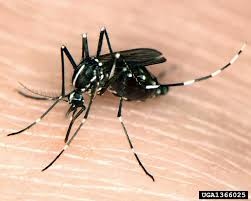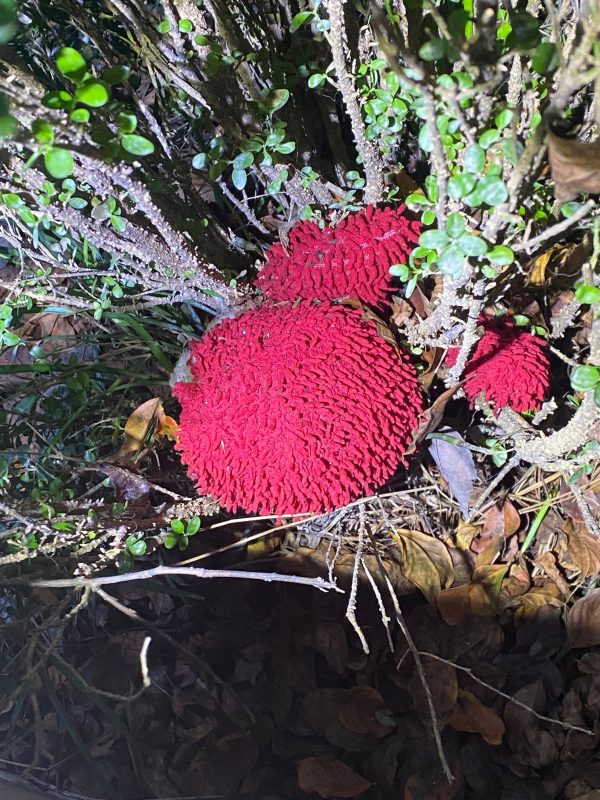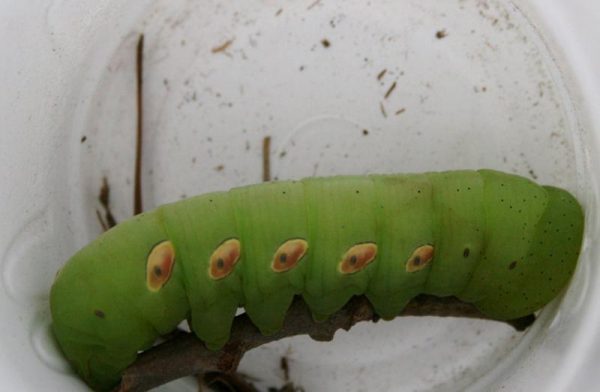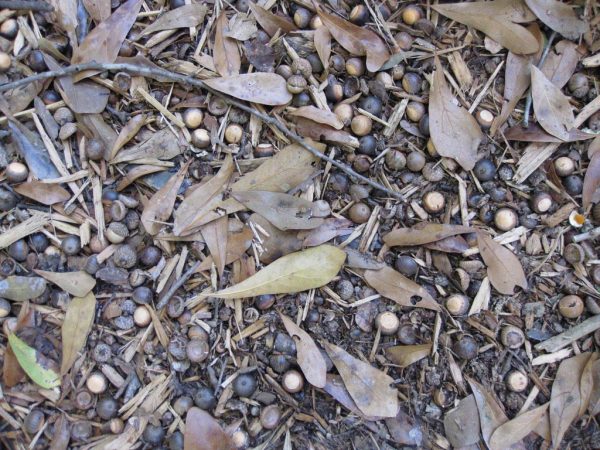The Earth-Kind® Rose Program
Roses are one of the most desired of garden flowers. Yet today’s hurried lifestyles often prevent gardeners from tending their roses as they should. The Earth-Kind® Rose Program has been very successful in identifying and promoting low-care roses. The program began in Texas but I thought you’d enjoy learning about its history.
The article below is reprinted by permission of the American Rose Society and the author.
It was originally published in “The American Rose”, September 2005 issue.
ROSES FOR WORKING PEOPLE – THE EARTH-KIND® CONCEPT
By Gaye Hammond, Houston Rose Society
The Earth-Kind® Rose Program is probably the most significant development in rose horticulture since the creation of the modern rose!
Four years ago when Dr. Steve George told me that there were roses that would grow and thrive on absolutely no human care I said one of two things had happened to him. He had either lost his mind or he didn’t know much about growing roses. I have come to regret those words.
We are all too familiar with the bad reputation that roses have been saddled with in the last century (roses are hard to grow, they have to be sprayed every few days, they are picky about their soil conditions, etc). In some respects this reputation is the by-product of man’s desire to create the perfect bloom, sacrificing the plant’s genetic propensity for fragrance, disease and insect resistance in favor of bigger blooms, bolder colors and long stems. Today, the home gardener must adapt their maintenance program to compensate for absence of the genetic qualities that make roses care free. This equates to implementing regular spray regimes to combat fungal problems and insect infestations and the addition of copious amounts of fertilizers and bloom enchanters to maintain high yields.
In reality the typical home gardener (non-rosarian) waters their roses when the plant wilts, applies chemical treatments once the bush has no leaves, does little or no amending of the soil, becoming frustrated when the roses do not meet their expectations. A high-maintenance approach to rose horticulture is not only disappointing for the home gardener, it is what usually steers them to growing something other than roses. Even though it seems that everyone “wants” to grow roses, a large population of home gardeners have such a strong perception that they are doomed to fail if they try to grow roses – they simply refuse to try. This perception is one that members of local rose societies constantly battle in our attempts to secure new members while encouraging rose horticulture within our communities.
Rose demise, however, does not rest solely at the entrance to the home garden. Many times, a gardener’s failure with roses has absolutely nothing to do with the gardener’s horticultural practices. A huge percentage of the 30 million rose bushes sold each year will not survive their third growing season for reasons unrelated to the gardener. There are four primary reasons for rose demise:
(1) Adversities encountered in the planting and/or lack of vigor of the cultivar,
(2) significant stressors to the cultivar through the harvesting, storage and shipping phases,
(3) improper care at the retail level prior to sale, and
(4) improper care and maintenance by the buyer.
Sometimes even the keen eye of an experienced rosarian misses the subtle signs of rose demise and buys a rose that does not survive more than a few years.
The Earth-Kind® Rose Program is the key to overcoming the public’s hesitation at growing roses. Roses which have received the coveted Earth-Kind® designation have been subjected to rigorous, scientifically sound, statistically significant research meticulously performed by Texas A&M University. Earth-Kind® Roses have been proven to give consistently high performance irrespective of diverse geographic regions and soil conditions they are grown in. For these reasons Earth-Kind® Roses are the perfect prescription for anyone wanting to grow care-free roses.
Earth-Kind® Roses have been proven to be the BEST flowering varieties requiring the LEAST amount of care and maintenance that GROW in geographically diverse regions and climate zones and REDUCE the need for pesticides and fungicides by 95%. If you can grow weeds you can grow Earth-Kind® Roses!
Birth of the Earth-Kind® Concept
Whether you grow 1 rose bush or 100, someone has surely asked you to recommend a rose that is easy to grow. Prior to our research, the answer to this question was solely based on the personal experience of the individual rosarian. Naturally this shoot-from-the-hip approach has its pitfalls. First and foremost, it does not take into account the horticultural expertise (or lack thereof) of the grower, geographic and growing conditions and the inherent disease resistance of the cultivar recommended.
In the early 1990s, landscape professionals asked Dr. George and Texas A&M University for recommendations on roses that gave not only outstanding performance in southern gardens, but also had the characteristics of being low maintenance. Dr. George was surprised that this question had never been scientifically answered, and in 1996 started the Earth-Kind® Rose Program. When the results of the first phase of the research program were released in 2002, the Houston Rose Society recognized the significance of this research project and agreed to provide the funding to expand the Earth-Kind® Program to not only identify additional cultivars that grow well in the South, but also to identify 30 cultivars which grow equally well from Canada to the Gulf Coast and from the Atlantic to the Pacific states.
Scope of the Research
The initial 5-year research study included 468 bushes (117 different cultivars) and was designed to identify the most beautiful care-free roses ever developed for Southern gardens . Of the cultivars studied, 11 showed spectacular performance despite very adverse growing conditions and an almost complete lack of maintenance throughout the study period. For example:
Rose cultivars included in the study were grown in highly alkaline clay soil with a pH rating between 8.0 and 8.4. (Ideally, roses grow best in slightly acid soils with a pH rating of 6.5);
Test beds contained unimproved soil with no soil amendments added at any time during the study period;
The roses were NEVER fertilized;
The roses were NEVER sprayed with fungicides or insecticides;
The roses received NO supplemental watering after the first year;
The roses were NEVER pruned other than to remove dead wood.
Study criteria required that researchers subject the selected cultivars to the absolute meanest conditions possible in what can only be described as “rose abuse”. The purpose of such criteria was to replicate in a uniform fashion the extremes that the home gardener levies on his roses. The only acts of kindness these bushes received were the addition of a 4-inch layer of mulch in the form of raw hardwood chips maintained on the beds throughout the research period and the addition of drip irrigation during the first year only.
In order to receive the Earth-Kind® designation, the cultivars were required to:
Exhibit outstanding disease and insect tolerance/resistance;
Produce spectacular blooms;
Be the best varieties for organic management methods;
Reduce the need to applications of pesticides/fungicides by 95%;
Reduce the need for supplemental watering by 70%.
The heat and drought tolerance of the cultivars which received the initial Earth-Kind® designation is so strong that all 11 varieties continued to flourish in their second growing season without supplemental watering through a 67-day drought with daily temperatures at or exceeding 100 degrees. The only noticeable effect of heat extremes was a reduction in bloom size.
All roses receiving the Earth-Kind® designation are grown on their own roots and are either highly tolerant or tolerant to blackspot. Research showed that affected bushes dropped 25% or less of their leaves once a year. None of the cultivars exhibited significant insect problems at any time during the study period.
The First Earth-Kind® Roses
In January 2002, at the conclusion of the first 5-year research study, Texas A&M had identified 11 cultivars which not only survived but also produced outstanding results in southern gardens. Those 11 cultivars are:
Sea Foam – a creamy white shrub rose sporting double blooms throughout the growing season with a cascading growth habit on a 3 foot tall by 6 foot wide bush.
Marie Daly – a pink polyantha dwarf shrubby rose with semi-double fragrant blooms on an almost thornless bush. This variety is perfect for growing in containers and proved to be tolerant to spider mites. It blooms throughout the growing season on a 3 foot tall by 3 foot wide bush.
The Fairy – a light pink polyantha dwarf shrubby rose that has double blooms on bushes 3 feet tall by 4 feet wide. This rose blooms throughout the growing season but does not do well in East Texas due to Cercospora leaf spot in that area. This is one cultivar that will survive where temperatures drop to 200 below 0. It is best used in containers, as a mass planting or as a low border.
Caldwell Pink – a lilac pink carnation-style found rose that grows as a small shrub on bushes 4 feet tall by 4 feet wide. This cultivar truly loves the heat and usually starts blooming once temperatures reach 80 degrees. It is not particular about soil conditions and has striking red, orange and purple foliage in the fall.
Knock Out® – a cherry red semi-doble shrub rose that blooms throughout the growing season on bushes that are 4 feet tall by 4 feet wide. This cultivar was named Rose of the Year in 2004, and is presently one of the candidates for the national Earth-Kind® trials.
Perle d’Or – a peach polyantha rose that blooms with fragrant pompom blooms throughout the growing season on bushes that are 4 feet tall by 4 feet wide. This cultivar out-performed Cecile Brunner in the field tests by 40% and thrived on adversity.
Belinda’s Dream – this medium-size shrub rose was the first rose to receive the Earth-Kind® designation and has been nicknamed “The Rose of the 20th Century”. It has fragrant pink blooms throughout the growing season which resemble hybrid teas with a petal count of 114 and foliage that is a striking blue green color. The mature bush size is 5 feet tall and 5 feet wide.
Else Poulson – a pink floribunda rose that blooms with semi-double flowers throughout the growing season. Because of its growth habit, it is best suited for use in background plantings with a mature size of 5 feet tall by 5 feet wide.
Carefree Beauty (Katy Road Pink) – a Griffith Buck rose producing fragrant pink double blooms throughout the growing season on bushes that are 5 feet tall by 5 feet wide. This is another cultivar presently being considered as a candidate for the national Earth-Kind® trials.
Mutabilis – also known as the “Butterfly Rose”, this China rose has single blooms which change color during their life cycle from yellow to pink to crimson. The bushes blooms throughout the growing season and reach a mature size of 6 feet tall by 6 feet wide.
Climbing Pinkie – This pink semi-double polyantha rose has very fragrant blooms and depending on the climate zone will perform as a repeat bloomer or a once bloomer. As a climbing rose, canes can reach 10 feet long. If cultivated as a shrub, the bush size will be 5 feet tall by 7 feet wide. It is not uncommon for a mature bush to display 800 blooms each day.
Recommendations for the Home Gardener
All roses need to be planted in a location that has good air circulation and receives a minimum of 6 hours of direct sunlight. Even though roses in the study were planted in unimproved soil, we recommend that the home gardener plant their roses in raised beds containing a planting mix that is 1/3rd aged compost, 1/3rd sand and 1/3rd manure. A soil test of your planting medium is a good way to start any new garden as it ensures that the home gardener incorporates only the materials and product that is needed for roses to flourish. Soil tests are very inexpensive and the agricultural extension agent in your area will be able to direct you to organizations within your community that perform this service.
Beds should be topped with 2 to 4 inches of hardwood mulch to insulate the root zone and retard moisture loss. Supplemental watering via drip irrigation throughout the first year is recommended. NEVER water roses at night as this establishes the perfect host environment for blackspot to develop.
Roses which have received the Earth-Kind® designation do not require regular pruning. If the bushes grow outside their bounds, a light shaping is all that is necessary. We do recommend that you remove any dead wood as it develops. Research identified all of these Earth-Kind® Roses as self-deadheading (meaning they drop spent blooms on their own), however like all repeat-blooming roses, the bushes will set new buds faster if the spent blooms are removed. Depending on the cultivar, allowing the bushes to self-deadhead adds an additional 1 to 2 weeks to the bloom cycle.
Maintaining a 3 to 4 inch layer of hardwood mulch on your Earth-Kind® Roses will eliminate the need to fertilize the bushes with commercial or organic fertilizers. Even though roses are known as heavy feeders, we have found that maintaining a 3 to 4 inch layer of hardwood mulch (preferably containing shreaded hardwood, outer bark and leaf tissue) replicates forest floor conditions. Gardeners will find during the first year the bottom inch of mulch will decompose. If, at the end of the first year, the gardener adds another inch of mulch on top of the existing layers it should take only 6 months for the next bottom inch of mulch to decompose. After the first year, gardeners who have created this “living mulch” cycle will only need to add 1 inch of hardwood mulch 2 times each year.
For those of you doubting the effectiveness of this approach, I suggest that you look at Mike Shoup’s books, Hardy Roses and Roses in the Southern Garden. Both of these books contain wonderful photographs of roses that are grown in landscape settings at the Antique Rose Emporium sites in Texas.
“At the Antique Rose Emporium, we have not applied any commercial or organic fertilizers to our landscape roses in the last 10 years,” says owner, Mike Shoup “Our approach to fertilization by sustaining a cycle of living mulch provides all of the fertilize that is necessary for the realization of outstanding bloom production on our roses. Think about it, no one is out there fertilizing those 100 year old roses we find in abandoned cemeteries. My philosophy is that if dead people can grow roses this way, anyone will be successful,” explains Mike.
You Can Be Part of this Research Project
In 2004, the Earth-Kind® Rose Brigade was formed as a result of the overwhelming public response to the research program. The Brigade provides the gardening public, whether they are homeowners, nurserymen, or curators of botanic/public gardens a vehicle to meaningfully participate in this monumental research project. Being a Brigade member involves no dues, no registration fees and no attendance at meetings.
Brigade members are simply asked to grow roses pre-identified by Texas A&M as possible candidates for study under the Earth-Kind® program. Members may grow as many or as few bushes as they wish. Brigade members make three simple commitments:
To grow the selected cultivar(s) for 3 years;
To NEVER spray the Earth-Kind® candidates with any chemical or organic insecticides/fungicides; and
To report their observations annually to Dr. Steve George.
These field trials provide valuable insight and validation to the research program, enabling the university and the Houston Rose Society to expand the program to a national level.
Through the Brigade, rose societies, master gardener groups and botanic gardens are sponsoring display gardens devoted to Earth-Kind® Roses within their own communities This effort not only provides beautiful gardens showcasing roses requiring almost no care, it also provides valuable field trials (necessary for any scientific research study). Individuals and/or groups interested in participating in the Earth-Kind® Rose Brigade should contact the author.
Earth-Kind® Roses Benefit Local Rose Societies
Like many reading this article, I am a rose exhibitor. To my fellow exhibitors, on behalf of Texas A&M and the Houston Rose Society, please accept our deepest appreciation for your hard work and commitment to sharing the love of roses with others. You are vital to this effort. Without you and what you do there would be no rose shows. There would be no blooms that attract the attention of complete strangers at rose events providing an opportunity for us to invite them to join our societies and share our passion for roses. Without the fruits of your efforts we would not have huge vibrant blooms that are used to showcase our society functions. It is your enthusiasm that provides the motivation for others to join and participate in our societies.
Over the last 5 years we have seen a continual decline in rose show participation in Texas (and probably on a national level as well). The same holds true for memberships within our organizations, with only a few exceptions. The reality is that just as our society exhibitor and membership numbers have declined, the number of people interested in growing Earth-Kind® Roses is exploding. National public response to the Earth-Kind® program has been staggering. Since the introduction of Earth-Kind® Roses to the public every lecture, full-day symposium, and Earth-Kind® school has enjoyed capacity crowds. People that would not otherwise attend a rose lecture come to Earth-Kind® presentations and leave convinced that these are truly roses that they can grow.
We have received reports that rose societies utilizing the Earth-Kind® concept as a teaching tool and membership focus have seen increases in new members. These reports coupled with our own experience tells us that future rose society members are those people who simply want to grow easy care roses. Because our hobby is infectious (one can never have enough roses) it is a simple step for these new members to become the exhibitors of tomorrow.
As we embrace this growing population into our midst we must educate and encourage them to be future exhibitors. Rose society leaders are encouraged to incorporate a class in their local rose shows where new members can show their Earth-Kind® Roses and have those roses which have been grown with no chemical treatments judged on a level playing field. Like growing roses, exhibiting the fruits of our labors is as rewarding as it is fun.
The Earth-Kind® Rose Program is undoubtedly the largest, most aggressive horticultural research project ever undertaken on roses. Ultimately, its applications will benefit gardeners in every state. Like all large endeavors, the success of the Earth-Kind® Program has largely been a team effort. Dr. Steve George and Texas A&M University conducts the research, oversees the field trials and co-ordinates the Earth-Kind® Rose Brigade. The Houston Rose Society provides the financial resources to expand the existing research to identify additional cultivars deserving of the Earth-Kind® designation, including national Earth-Kind® Roses.
Mark Chamblee, Chamblees Rose Nursery, and Mike Shoup, Antique Rose Emporium are our commercial partners, providing not only their horticultural expertise, but also have committed to making Earth-Kind® Roses (and potential Earth-Kind® candidates) available to the public. Steve Huddleston of the Fort Worth Botanic Gardens assists with the co-ordination and creation of Earth-Kind® displays in botanic and public gardens across the United States. Landry Lockett, Texas A&M, co-ordinates national participation by master gardeners in the research program.
On behalf of all of us involved in the Earth-Kind® Rose Program, welcome to the horticultural gardening system of the 21st century!!!


















